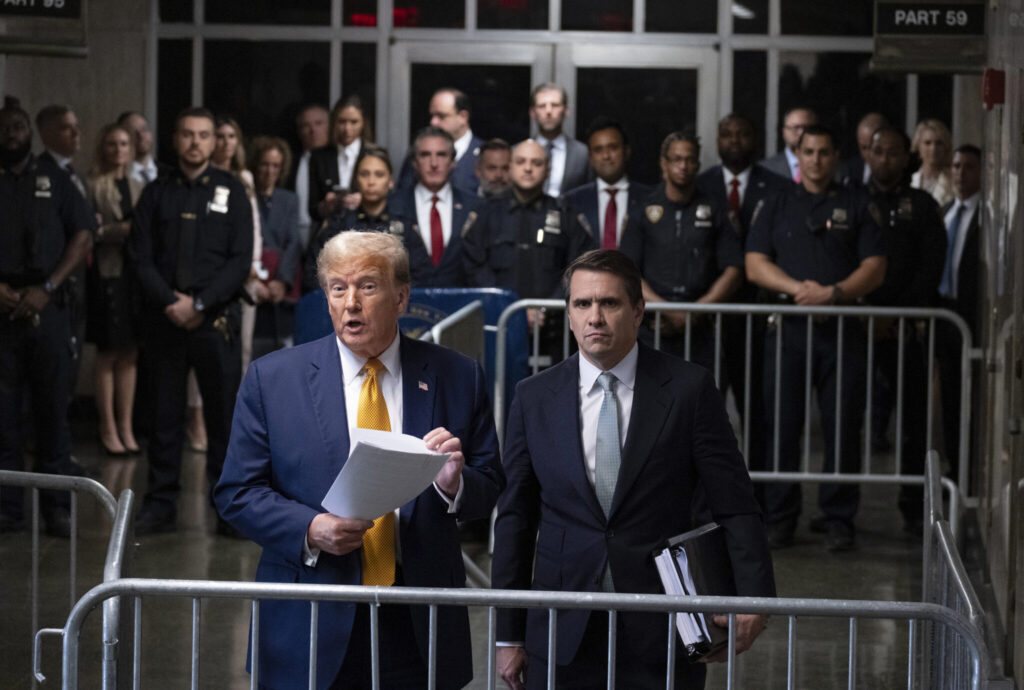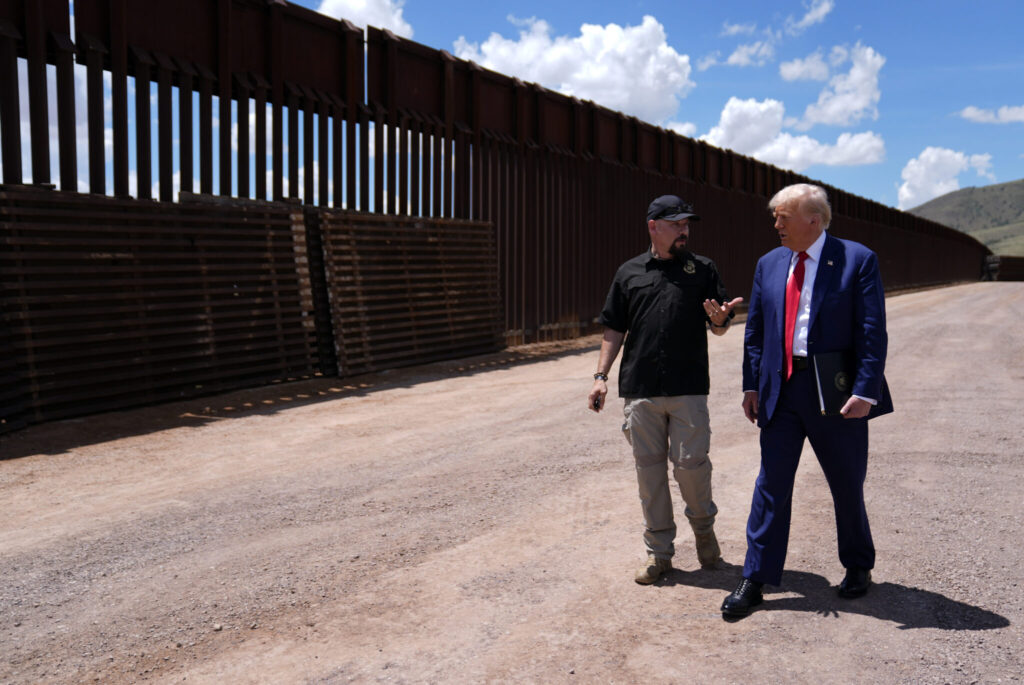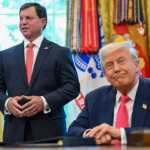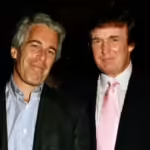Trump Day 1 plans/ immigration crackdown/ Trump pardons Jan 6 rioters/ Trump tariffs on imports/ Trump executive orders/ Newslooks/ WASHINGTON/ J. Mansour/ Morning Edition/ On his first day back in office, President-elect Donald Trump plans an ambitious slate of executive actions, including mass deportations, pardons for January 6 participants, and reversals of Biden-era policies on education, immigration, and energy. Trump’s administration intends to reshape federal staff protections, enforce tariffs on imports, and halt offshore wind projects, all within the first 24 hours.

Trump’s Day 1 Priorities: Quick Looks
- Mass Deportation Program: Trump pledges to begin the largest deportation operation in U.S. history, targeting undocumented immigrants.
- Pardoning January 6 Participants: Plans to pardon many convicted in the Capitol riot, calling them “patriots.”
- Executive Orders on Energy: Aims to increase fossil fuel production and reverse Biden’s climate policies.
- Federal Workforce Overhaul: Intent to eliminate protections for “deep state” employees, targeting around 50,000 positions.
- Trade and Tariff Measures: Promises tariffs on imports, particularly from China, to boost U.S. jobs and the economy.
- Ukraine-Russia Conflict Resolution: Vows to negotiate peace in Ukraine within 24 hours of meeting leaders.
Trump’s Day 1 Agenda: Immigration Crackdown, Pardons, and Policy Reversals
Deep Look
Donald Trump’s plans for his return to the White House begin with a slate of sweeping executive actions targeting immigration, criminal cases, federal workforce structure, and trade policies. Trump has emphasized his intent to enact these actions “on Day 1,” using his presidential authority to dismantle Biden-era policies and reset his own priorities.
Mass Deportations
Trump plans to immediately initiate what he describes as “the largest deportation program in American history,” targeting undocumented immigrants and calling for the removal of “criminals” and “drug lords.” His administration has proposed using the Alien Enemies Act, a rarely invoked 1798 law allowing the deportation of foreign nationals during times of conflict. Trump also intends to deploy the National Guard to assist in enforcement efforts, potentially relying on support from Republican governors to mobilize resources across state lines. His former ICE director, Tom Homan, will oversee the operations.
While Trump’s intention to initiate mass deportations on Day 1 is clear, the logistics are complex. Achieving this level of enforcement would require expanded detention facilities, a trained law enforcement force, and agreements with other nations to receive deportees. Trump acknowledged the high costs involved but argued that “there is no price tag” when it comes to protecting American communities.
Pardoning January 6 Rioters
In his campaign, Trump made clear his intention to pardon many individuals convicted of crimes related to the January 6 Capitol riot, whom he called “unbelievable patriots.” As president, Trump could use his pardon power to halt ongoing prosecutions and dismiss federal convictions linked to the riot. Trump has already signaled that, while not all offenders would be eligible, many would receive pardons on his first day in office.
Restructuring the Federal Workforce
Trump aims to overhaul the federal workforce by revoking protections for career civil servants he views as “deep state” actors. By reviving a 2020 executive order known as “Schedule F,” he plans to create a new class of federal employees, making it easier to replace career staff with political appointees. This initiative would affect an estimated 50,000 of the federal workforce’s 2.2 million civilian employees.
Under this restructuring, Trump intends to dismiss what he perceives as “corrupt bureaucrats” within agencies, particularly those involved in national security and intelligence. His agenda also includes requiring federal employees to pass a new civil service test, potentially reshaping the composition of the government’s workforce.
Imposing Tariffs on Imports
A significant component of Trump’s economic agenda is the imposition of tariffs on imported goods, particularly from China. He has proposed tariffs ranging from 10% across the board to 60% on Chinese imports, arguing these measures will boost American manufacturing and strengthen national security. Trump’s administration could impose tariffs without congressional approval by invoking Section 232 of the Trade Expansion Act, a provision that allows for tariffs in the interest of national security.
Trump has also floated the idea of a 25% tariff on imports from Mexico if immigration issues persist, stating he would address these concerns with Mexico’s new president, Claudia Sheinbaum. Trump’s previous use of tariffs without congressional involvement suggests he could quickly implement similar measures if he chooses.
Rollback of Transgender Protections in Schools
During his campaign, Trump pledged to dismantle Biden administration policies on transgender protections for students, including rolling back Title IX protections that prohibit discrimination based on gender identity. Trump’s campaign emphasized opposition to what it called “transgender insanity” in schools and criticized gender and racial diversity initiatives.
Trump has indicated he would target schools that promote gender and racial diversity training or policies, suggesting he could use executive orders to block federal funding for noncompliant institutions. However, a broad rollback of funding for public schools may require congressional action to pass legislation.
Energy Policy Shifts and Environmental Rollbacks
Trump’s energy plans include a commitment to “drill, drill, drill” by opening new areas for oil exploration and revoking environmental protections enacted under Biden. He has pledged to cancel offshore wind projects, dismiss targets for electric vehicle adoption, and eliminate environmental regulations aimed at reducing greenhouse gas emissions. Trump has argued that increased fossil fuel production will reduce energy costs and stimulate the economy.
He plans to use executive orders to jumpstart fossil fuel drilling, even in protected areas, and lift restrictions on oil and gas production in sensitive areas, including the Arctic wilderness. These actions would mark a significant departure from Biden’s climate agenda, which focused on renewable energy and emission reductions.
Ending the Russia-Ukraine Conflict
Trump has repeatedly asserted he can broker peace between Russia and Ukraine “within 24 hours,” claiming he will bring both parties to the negotiating table on his first day in office. Trump has long been critical of the Biden administration’s support for Ukraine, calling for an end to military aid in favor of direct negotiations.
While Trump’s plan for resolving the conflict remains vague, he has emphasized his desire to halt the ongoing violence, stating, “I want them to stop dying.” Trump’s relationship with Russian President Vladimir Putin and criticisms of U.S. aid to Ukraine suggest he may prioritize de-escalation over military involvement, though it is unclear how his approach would differ substantively from current diplomatic efforts.
Looking Forward
Trump’s first-day agenda represents an ambitious return to office that aims to reverse Biden’s policies and reassert his influence over various sectors of the government and economy. While many of these promises involve executive orders that could take effect immediately, others may require cooperation from Congress or face legal challenges. Trump’s willingness to bypass traditional channels of implementation, however, underscores his intent to act decisively and quickly to achieve his goals for the country.







